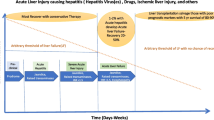Abstract
Objective
To retrospectively analyze the clinical characteristics and experience of Chinese children with paraquat poisoning.
Methods
Twenty-two children with paraquat poisoning who presented to the hospital from October 2007 through September 2012 were enrolled into this study. The clinical indices of these cases were collected and analyzed.
Results
All the children were poisoned due to oral ingestion of paraquat. Different degrees of damage were found in multiple systems in their bodies. All of them were administered pulse therapy using methylprednisolone (20 mg/kg/d × 3d) and Gamma globulin (total 2 g/kg divided into 3 d to 5 d) in the early stage. Prednisone was then given orally for 4wk to 8 wk. The total mortality rate of the patients was 63.6 % (14 of 22 patients died). Statistical differences (P < 0.05) were found between the surviving and dead patients, with regard to age, plasma paraquat levels, the highest levels of alanine aminotransferase, aspartate aminotransferase, γ-glutamyl transferase, total bilirubin, direct bilirubin, indirect bilirubin, blood urea nitrogen, creatinine and pH value, the lowest levels of PaO2, PaCO2 and SaO2. Plasma paraquat level was positively related to pH value, but was negatively related to PaO2, PaCO2 and SaO2 levels. None of the patients died from hepatic and renal complications. Pulmonary fibrosis was the most severe complication and the primary cause of death.
Conclusions
Paraquat poisoning is difficult to cure. In this study, pulmonary fibrosis was the primary cause of death. Treatment by administering large doses of glucocorticoids and Gamma globulin proved to be effective in the early stage. However, the treatment may not reverse the development of pulmonary fibrosis. The long-term prognosis of paraquat poisoning was not optimistic. The plasma paraquat level could be a significant factor in predicting the prognosis.
Similar content being viewed by others
References
Dinis-Oliveira RJ, Duarte JA, Sanchez-Navarro A, Remiao F, Bastos ML, Carvalho F. Paraquat poisonings: Mechanisms of lung toxicity, clinical features, and treatment. Crit Rev Toxicol. 2008;38:13–71.
Ghazi-Khansari M, Mohammadi-Bardbori A, Hosseini MJ. Using Janus green B to study PQ toxicity in rat liver mitochondria: Role of ACE inhibitors (Thiol and nonthiol ACEi). Ann N Y Acad Sci. 2006;1090:98–107.
Aydin S, Aral I, Kilic N, Bakan I, Aydin S, Erman F. The level of antioxidant enzyme, plasma vitamin C and E in cement plant workers. Clin Chem Acta. 2004;341:193–8.
Mohammadi-Bardbori A, Ghazi-Khansari M. Alternative electron acceptors: Proposed mechanism of paraquat mitochondrial toxicity. Environ Toxicol Pharmacol. 2008;26:1–5.
Huang C, Zhang X, Jiang Y, Li G, Wang H, Tang X, et al. Paraquat-induced convulsion and death: A report of five cases. Toxicol Ind Health. 2012 Apr 4 [Epub ahead of print].
Wu B, Song B, Yang H, Huang B, Chi B, Guo Y, et al. Central nervous system damage due to acute paraquat poisoning: An experimental study with rat model. Neurotoxicology. 2013;35:62–70.
Wu B, Song B, Tian S, Tian S, Huo S, Cui C, et al. Central nervous system damage due to acute paraquat poisoning: A neuroimaging study with 3.0T MRI. Neurotoxicology. 2012;33:1330–7.
Bartlett RM, Holden JE, Nickles RJ, Murali D, Barbee DL, Barnhart TE, et al. Paraquat is excluded by the blood brain barrier in rhesus macaque: An in vivo pet study. Brain Res. 2009;1259:74–9.
Lin JL, Lin-Tan DT, Chen KH, Huang WH. Repeated pulse of methylprednisolone and cyclophosphamide with continuous dexamethasone therapy for patients with severe paraquat poisoning. Crit Care Med. 2006;34:368–73.
Lin JL, Lin-Tan DT, Chen KH, Huang WH, Hsu CW, Hsu HH, et al. Improved survival in severe paraquat poisoning with repeated pulse therapy of cyclophosphamide and steroids. Intensive Care Med. 2011;37:1006–13.
Tsai JP, Lee RP, Wang CH, Fang TC, Hsu BG. A clinical study of prognosis and glucocorticoid pulse treatment in patients with acute paraquat intoxication. Tzu Chi Med J. 2009;21:156–60.
Zhi Q, Sun H, Qian X, Yang L. Edaravone, a novel antidote against lung injury and pulmonary fibrosis induced by paraquat? Int Immunopharmacol. 2011;11:96–102.
Mohammadi-Karakani A, Ghazi-Khansari M, Sotoudeh M. Lisinopril ameliorates paraquat- induced lung fibrosis. Clin Chim Acta. 2006;367:170–4.
Ghazi-Khansari M, Mohammadi-Bardbori A. Captopril ameliorates toxicity induced by paraquat in mitochondria isolated from the rat liver. Toxicol In Vitro. 2007;21:403–7.
Djukic MM, Jovanovic MD, Ninkovic M, Stevanovic I, Llic K, Curcic M, et al. Protective role of glutathione reductase in paraquat induced neurotoxicity. Chem Biol Interact. 2012;199:74–86.
Seifirad S, Keshavarz A, Taslimi S, Aran S, Abbasi H, Ghaffari A. Effect of pirfenidone on pulmonary fibrosis due to paraquat poisoning in rats. Clin Toxicol (Phila). 2012;50:754–8.
Yang CJ, Lin JL, Lin-Tan DT, Weng CH, Hsu CW, Lee SY, et al. Spectrum of toxic hepatitis following intentional paraquat ingestion: Analysis of 187 cases. Liver Int. 2012;32:1400–6.
Pavan M. Acute kidney injury following paraquat poisoning in India. Iran J Kidney Dis. 2013;7:64–6.
Huang C, Zhang X. Prognosis significance of arterial blood gas analysis in the early evaluation of paraquat poisoning patients. Clin Toxicol (Phila). 2011;49:734–8.
Lee Y, Lee JH, Seong AJ, Hong CK, Lee HJ, Shin DH, et al. Arterial lactate as a predictor of mortality in emergency department patients with paraquat intoxication. Clin Toxicol (Phila). 2012;50:52–6.
Yeo CD, Kim JW, Kim YO, Yoon SA, Kim KH, Kim YS. The role of pentraxin-3 as a prognostic biomarker in paraquat poisoning. Toxicol Lett. 2012;212:157–60.
Conflict of Interest
None.
Role of Funding Source
None.
Author information
Authors and Affiliations
Corresponding author
Rights and permissions
About this article
Cite this article
Ge, W., Wang, Hl. & Sun, Rp. Clinical Characteristics of Paraquat Poisoning in 22 Chinese Children. Indian J Pediatr 81, 670–674 (2014). https://doi.org/10.1007/s12098-013-1155-z
Received:
Accepted:
Published:
Issue Date:
DOI: https://doi.org/10.1007/s12098-013-1155-z




